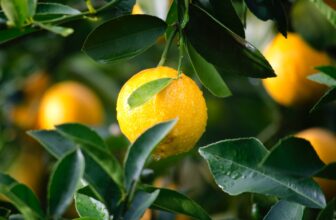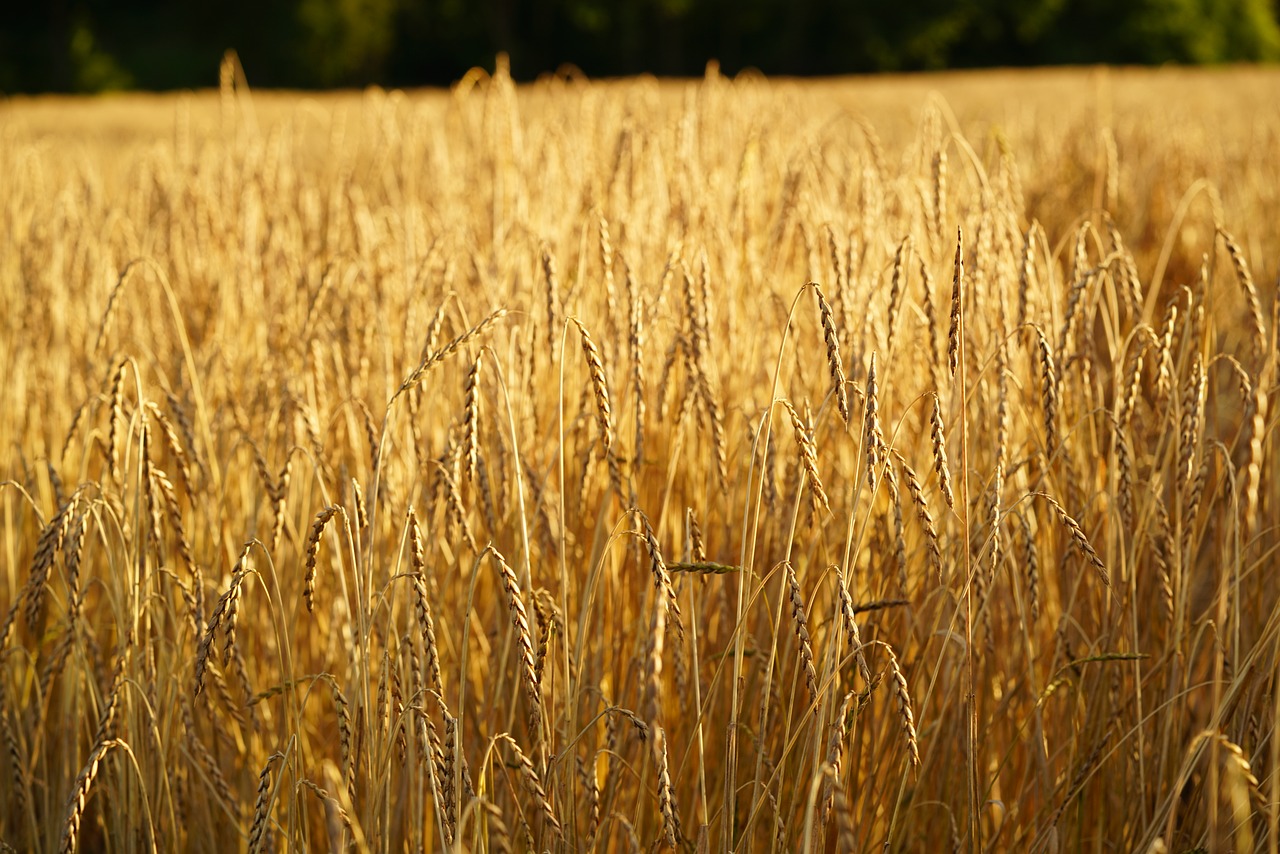
Table of Contents
Are you tired of the same old wheat flour in your pantry? Why not try something new and exciting by growing your own spelt! Spelt is an ancient grain with a nutty flavor that is gaining popularity in the culinary world. Growing spelt is not only fun and easy, but it also provides a healthier alternative to wheat flour with its high protein and nutrient content.
Whether you’re a seasoned farmer or a beginner gardener, growing spelt can be a rewarding experience. So, let’s put on our gardening gloves and dive into the world of spelt farming!
What is Spelt?
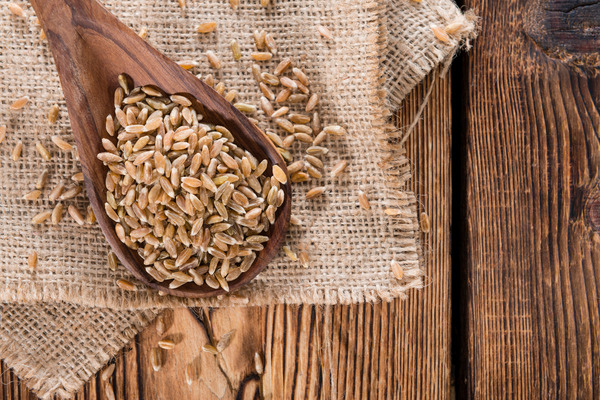
Spelt, also known as dinkel wheat, is an ancient grain that has been around for thousands of years. It is a close relative of wheat, but has a nuttier flavor and a coarser texture. Spelt was once a staple in Europe and the Middle East, where it was used to make bread, pasta, and other baked goods.
The history of spelt dates back to ancient times, where it was used by the Romans and Greeks as a primary food source. It was also commonly grown in medieval Europe, where it was known as the “marching grain” because it provided sustenance for soldiers on long journeys.
In recent years, spelt has made a comeback due to its unique flavor and health benefits. It is a good source of fiber, protein, and vitamins, making it a great addition to any diet. With its rich history and delicious taste, spelt is a grain worth exploring in the kitchen.
Uses of Spelt
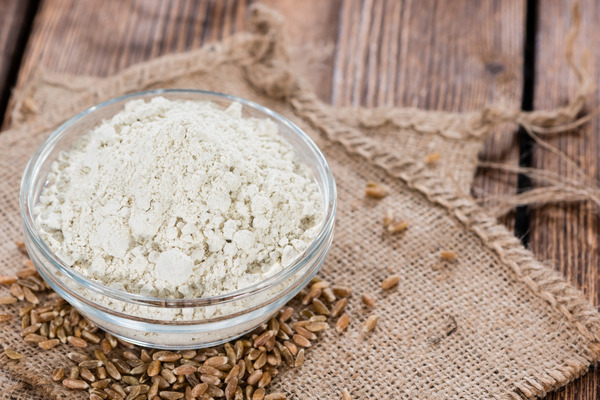
Spelt, a nutritious grain that has been used for thousands of years, has several uses in both culinary and non-culinary applications. Here are some of the most common uses:
- Flour: Spelt flour can be used in baking bread, muffins, cookies, and other baked goods. It has a nutty, slightly sweet flavor and a denser texture than wheat flour.
- Breakfast cereal: Spelt can be cooked and used as a hot breakfast cereal. It can be combined with milk, honey, and fruit for a nutritious and delicious breakfast.
- Beer brewing: Spelt can be used in beer brewing to create a unique flavor profile. It is often used in traditional Belgian beers.
- Animal feed: Spelt is often used as animal feed, particularly for horses and poultry. Its high protein content and easy digestibility make it a popular choice.
- Pasta: Spelt pasta is a popular alternative to wheat pasta. It has a nuttier, richer flavor and a firmer texture.
- Snack foods: Spelt can be used to make a variety of snack foods, including crackers and granola bars.
- Health supplements: Spelt is often used in health supplements due to its high nutrient content. It is a good source of protein, fiber, and vitamins and minerals such as iron and magnesium.
Overall, spelt is a versatile grain that can be used in a variety of applications. Its unique flavor and nutritional profile make it a popular choice for those looking to add variety to their diet.
Pros and Cons of Growing Spelt
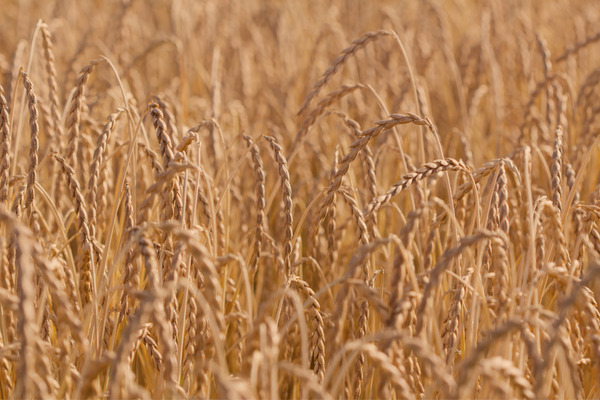
Growing spelt can be a rewarding experience, but it comes with both advantages and disadvantages. Here are some of the pros and cons of growing spelt in your garden:
Pros:
- Nutritious: Spelt is a nutrient-dense grain that contains protein, fiber, and minerals such as iron, magnesium, and zinc.
- Versatile: Spelt can be used in a variety of recipes, from bread and pasta to salads and soups.
- Sustainable: Spelt is an ancient grain that requires fewer pesticides and fertilizers than modern wheat, making it a more sustainable crop.
- Hardy: Spelt can tolerate harsh growing conditions, such as drought and poor soil, making it a good crop for small-scale or low-input farming.
- Pest-resistant: Spelt is naturally pest-resistant, which means that it is less likely to be damaged by insects or disease.
Cons:
- Low yield: Spelt typically produces a lower yield than modern wheat, which can make it less profitable for commercial growers.
- Expensive: Spelt is often more expensive than other grains due to its lower yield and specialized processing requirements.
- Processing challenges: Spelt requires specialized equipment and processing techniques, which can be a challenge for small-scale growers.
- Gluten sensitivity: Although spelt is lower in gluten than modern wheat, it can still cause problems for people with gluten sensitivity or celiac disease.
- Time-consuming: Growing and processing spelt can be time-consuming, as it requires careful attention to planting, harvesting, and processing techniques.
Overall, growing spelt can be a worthwhile endeavor for small-scale or sustainable farmers who are looking for a versatile and nutrient-dense crop. However, it may not be the best choice for larger-scale commercial operations or for those with gluten sensitivities.
How to Grow Spelt
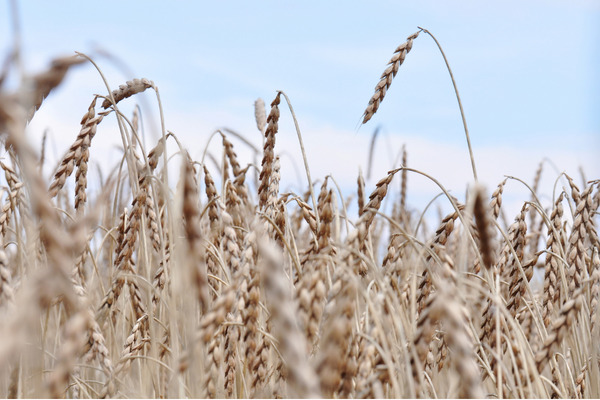
Here’s how to grow spelt in your very own garden:
- Choose the right location: Select a spot with full sun exposure, good drainage, and fertile soil.
- Prepare the soil: Clear the area of weeds and rocks, and till the soil to a depth of at least 6 inches. Spelt prefers slightly alkaline soil, so add lime if necessary.
- Plant the seeds: Sow the spelt seeds at a depth of 2 inches and space them about 4 inches apart. If you’re planting a larger area, consider using a grain drill for more efficient planting.
- Water regularly: Keep the soil moist but not waterlogged, especially during the germination and early growth stages.
- Fertilize: Apply nitrogen-rich fertilizer once or twice during the growing season to promote healthy growth.
- Weed regularly: Spelt doesn’t compete well with weeds, so it’s important to remove them regularly to prevent them from overtaking your crop.
- Harvest: Harvest spelt when the heads have turned golden brown and the kernels are hard. Cut the stalks and thresh the grain to separate the seeds from the chaff.
- Store the spelt: Clean and dry the spelt grains before storing them in a cool, dry place.
- Rotate crops: To prevent soil depletion and disease, rotate your spelt crop with other crops each year.
Caring for Spelt
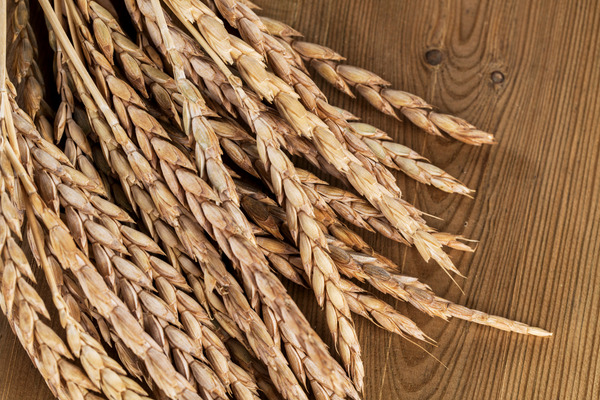
When growing spelt, there are several factors to take into consideration. These include the following:
· Soil
Spelt grows best in well-drained, fertile soils with a pH range of 6.0-7.5. It prefers soils that are rich in organic matter and high in nitrogen. Spelt also requires a good supply of available phosphorus and potassium. To improve the soil for growing spelt, it’s recommended to add compost or well-rotted manure to the soil before planting.
· Sunlight
Spelt is a cool-season crop and it requires full sun to grow. It should be planted in a location that receives at least 6-8 hours of sunlight per day. In warmer climates, spelt can be grown in partial shade, but it may not produce as much grain as it would in full sun.
Additionally, spelt should be protected from strong winds that can damage the plants and affect their growth. It’s important to note that spelt is a short-day plant, which means it requires a certain amount of darkness each day to trigger the flowering process.
Therefore, spelt is typically grown during the fall or winter when the days are shorter and the nights are longer. In some regions, spelt can also be grown in the spring, but it’s important to choose a variety that’s suitable for the local climate and day length.
· Watering
Spelt requires moderate to high levels of water to grow properly. The plant needs consistently moist soil, especially during the critical growth stages, including germination and flowering. In general, spelt requires 15-20 inches of water during its growing season, which typically lasts from late fall to early summer.
However, the exact water requirements may vary depending on the climate, soil type, and other factors. Overwatering can lead to root rot and other problems, so it’s important to avoid waterlogging the soil.
Additionally, spelt can tolerate drought conditions to some extent, but extended periods of dryness can cause stunted growth and reduced yields. Therefore, it’s important to monitor the soil moisture level regularly and adjust the watering frequency and amount accordingly.
· Fertilizer

Spelt is a low-maintenance crop and doesn’t require much fertilizer. However, to ensure a healthy crop, it’s essential to provide adequate nutrition. Before planting, make sure to have your soil tested to determine any deficiencies.
Spelt requires nitrogen, phosphorus, and potassium. You can use organic fertilizers like manure, compost, or bone meal to provide the necessary nutrients. It’s recommended to apply fertilizer once before planting and again during the growing season. Make sure to apply the fertilizer evenly and water thoroughly afterward to avoid burning the plants.
It’s also essential to note that over-fertilizing can result in excessive growth, making the plants more susceptible to lodging. Additionally, too much nitrogen can lead to an increased risk of disease and insect problems. So, be careful not to over-fertilize, and follow the instructions on the package carefully.
· Pests
Spelt is a relatively pest-resistant crop, but like any other crop, it’s not completely immune. Some common pests that can attack spelt include aphids, slugs, snails, and grasshoppers.
Aphids can be controlled by introducing natural predators like ladybugs or by spraying a solution of soapy water on the plants. Slugs and snails can be deterred by placing copper strips around the perimeter of the garden bed or by handpicking them off the plants. Grasshoppers can be controlled by using a fine mesh netting to cover the plants.
One important thing to note is that prevention is always better than cure when it comes to pest control. Keeping your garden clean, removing any debris or weeds, and rotating your crops regularly can all help to prevent pest infestations.
Another method of pest control is to use natural or organic sprays, such as neem oil or garlic spray. These are safe and effective ways to control pests without harming beneficial insects or contaminating the environment.
It’s also a good idea to practice companion planting, which is planting complementary crops together to deter pests. For example, planting marigolds near spelt can help to repel aphids and other pests.
While spelt is a relatively low-maintenance crop, it’s important to keep an eye out for any pest infestations and take preventive measures to ensure a healthy harvest. With proper care and attention, you can successfully grow spelt and enjoy its many benefits.
· Diseases
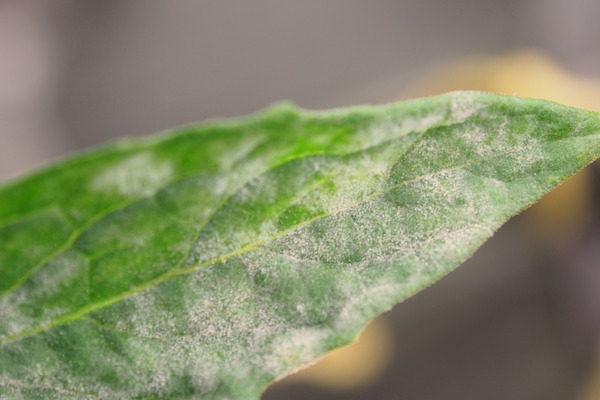
Spelt can be susceptible to various diseases, including fungal infections such as fusarium head blight, powdery mildew, and leaf rust. Insects like aphids and mites can also cause damage to spelt plants. Proper crop management practices such as crop rotation, timely planting, and disease-resistant varieties can help minimize the risk of these diseases.
Here’s a look at some of the most common diseases that affect spelt:
Fusarium Head Blight
This disease is caused by a fungus and can cause significant yield losses. Symptoms include premature ripening and premature death of the plant. To control the spread of this disease, it’s important to rotate crops, plant resistant varieties, and avoid planting spelt in fields with a history of the disease.
Powdery Mildew
This is a fungal disease that can cause a white or grayish coating on the leaves of spelt plants. The disease can reduce yields and weaken the plant’s overall health. To prevent this disease, it’s important to plant disease-resistant varieties, space plants properly to allow for good air circulation, and avoid overhead irrigation.
Rust
Rust is another fungal disease that can cause reddish-brown pustules on the leaves of spelt plants. This disease can also weaken the plant and reduce yields. To prevent rust, it’s important to plant disease-resistant varieties, practice crop rotation, and avoid overhead irrigation.
Septoria Leaf Blotch
This is a fungal disease that can cause brown spots on the leaves of spelt plants. The disease can reduce yields and weaken the plant’s overall health. To prevent this disease, it’s important to plant disease-resistant varieties, space plants properly to allow for good air circulation, and avoid overhead irrigation.
To keep your spelt plants healthy, it’s important to monitor them regularly for signs of disease and take action if necessary. This can include removing infected plants, using fungicides, and making changes to your planting and irrigation practices.
FAQs about Spelt
Spelt is an ancient grain that has been cultivated for thousands of years. It is a distant cousin of modern wheat and has a nutty flavor and chewy texture.
No, spelt is not gluten-free. It contains a type of gluten protein that can cause problems for people with gluten sensitivities or celiac disease.
Some people find that spelt is easier to digest than modern wheat, but this can vary from person to person.
Spelt is a good source of fiber, protein, and minerals like iron and magnesium. It also contains B vitamins and antioxidants.
Yes, spelt can be used in baking for bread, muffins, cookies, and other baked goods. However, because it contains less gluten than modern wheat, it may require special handling.
Spelt flour is available at many health food stores, specialty food stores, and online retailers.
Spelt can be cooked like rice or other grains. Simply rinse the spelt, add it to boiling water, and simmer for about 30-40 minutes or until tender.
Spelt can be more sustainable than modern wheat because it requires fewer pesticides and fertilizers to grow.
Spelt can be more expensive than modern wheat because it is not as widely cultivated and requires more labor-intensive processing.
Spelt can be used as a substitute for wheat in some recipes, but it may require adjustments to the recipe to account for its different texture and gluten content.
Wrapping Up
Growing spelt is a rewarding and unique experience. Not only does it provide a delicious and nutritious grain, but it also connects us to our ancient agricultural roots. So if you’re feeling adventurous, why not give spelt a try? Who knows, you might just discover a new favorite grain and become the talk of the neighborhood!
Plus, you can impress your friends by sharing fun facts like how spelt is an ancestor of modern wheat, or how it was once used as currency in ancient civilizations. So what are you waiting for? Grab your seeds, get your hands dirty, and let’s grow some spelt!






